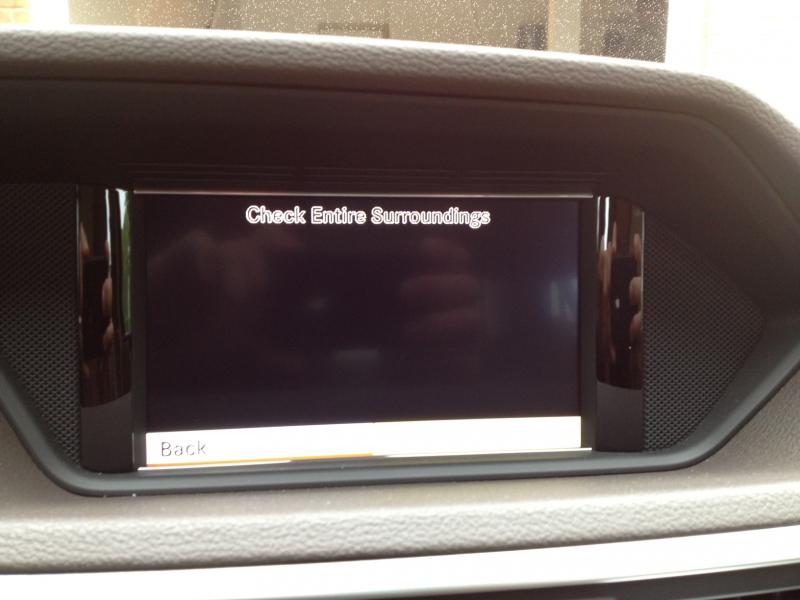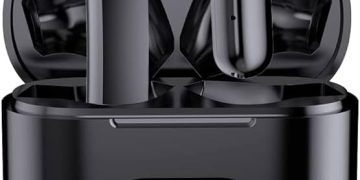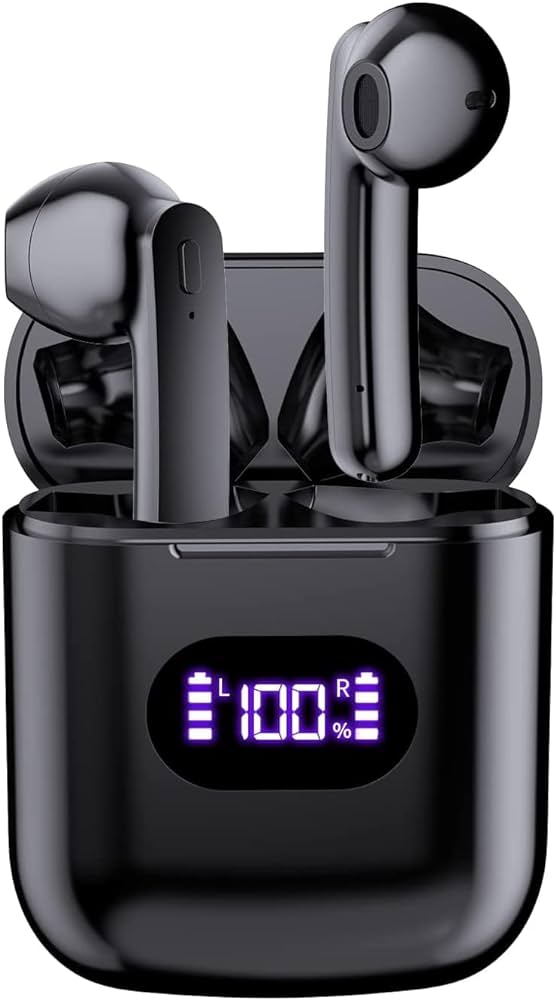If your reverse camera is not working when the engine is running, it might be due to a wiring issue or a malfunctioning camera. Make sure to check the connections and wiring for any damage or loose connections.
If everything appears to be in order, you may need to replace the camera. Having a functioning reverse camera is essential for safety while driving and parking. This issue can be frustrating and worrying, but with some troubleshooting and possibly a professional inspection, it can be resolved.
We will explore common reasons why a reverse camera may not work when the engine is running, as well as potential solutions to help you get it back up and running smoothly. By understanding the potential causes and solutions, you can ensure the safety and functionality of your vehicle’s reverse camera system.
Table of Contents
ToggleTroubleshooting Reverse Camera Issues
Are you having trouble with your reverse camera not working when the engine is running? It can be quite frustrating when you rely on your camera for parking and navigation, only to find it malfunctioning at the most inconvenient times. In this section, we will delve into the common issues related to reverse camera malfunction during engine operation and discuss some initial troubleshooting steps to help you get to the root of the problem.
Understanding The Problem With Reverse Cameras
Reverse cameras are an invaluable safety feature that provides drivers with a clear view of obstacles when reversing. However, these cameras can sometimes fail to function, particularly when the engine is running. Understanding the underlying causes of this issue is crucial to finding an effective solution.
Possible Causes For Malfunction During Engine Operation
Several factors can contribute to the malfunction of reverse cameras when the engine is running. From electrical issues to hardware malfunctions, identifying the root cause is essential for resolving the problem efficiently.
Initial Checks To Perform Before Proceeding
- Ensure that the camera lens is clean and free from any obstruction that may be affecting its functionality.
- Inspect the wiring connections to the camera, looking for any loose or damaged connections that may be disrupting the signal.
- Check the fuse related to the reverse camera to confirm if it’s intact and functioning properly.
- Verify that the camera is receiving sufficient power and ground connections for optimal performance.
Reverse Camera Not Working: Common Culprits
When your reverse camera stops working while the engine is running, it can lead to inconvenience and safety concerns. Identifying the common culprits behind this issue can help in resolving the problem swiftly. Let’s delve into the potential reasons why your reverse camera may not be working.
Electrical Connection Problems
One of the common reasons for a reverse camera malfunctioning with the engine running is electrical connection problems. Corrosion, loose connections, or damaged wiring can disrupt the power supply to the camera, resulting in a non-functional system. It’s essential to inspect the electrical connections and wiring for any signs of wear, damage, or loose connections.
Faulty Camera Or Wiring
A faulty camera or wiring issues can lead to the reverse camera not working as intended. Over time, the camera lens may get obstructed or the wiring may develop faults, causing the camera to malfunction. Regular inspection of the camera and wiring is crucial to identify and rectify any issues promptly.
Interference From Other Car Systems
Interference from other car systems, such as parking sensors or radio frequency signals, can disrupt the functionality of the reverse camera. It’s essential to ensure that the camera system is shielded from interference by other electronic components within the vehicle. Additionally, ensuring proper grounding and shielding of the camera system can help minimize interference issues.
Diagnosing Engine-related Interference
If the reverse camera malfunctions specifically when the engine is running, the issue may stem from engine-related interference. Understanding the impact of engine components on the reverse camera’s functionality and identifying patterns related to engine activity are crucial steps in diagnosing and resolving this issue.
Assessing The Impact Of Engine Components On Camera Function
Engine components can generate electromagnetic interference that disrupts the reverse camera’s signal. Common sources of interference include ignition systems, alternators, and poorly shielded wiring. When these components are in operation, they can emit electromagnetic fields that affect the camera’s signal transmission, leading to a non-functional or distorted display.
Identifying Patterns And Triggers Related To Engine Activity
Observing when the reverse camera malfunctions in relation to specific engine activities can provide valuable insights. For instance, does the camera consistently fail when the vehicle is idling, accelerating, or when specific electrical components are engaged? Identifying these patterns can help pinpoint the root cause of the interference, allowing for targeted troubleshooting and resolution.

Credit: m.youtube.com
Step-by-step Camera And Engine Analysis
When dealing with a reverse camera not working while the engine is running, it’s important to conduct a step-by-step analysis that isolates potential issues with the camera and the engine. By following these instructions and distinguishing between electrical and mechanical interferences, you can effectively identify and resolve the problem. This comprehensive approach will help ensure that the reverse camera functions seamlessly even with the engine in operation.
Instructions For Isolating The Engine Factor
When faced with a reverse camera malfunction, the first step is to assess the engine’s role in the problem. By carefully examining the engine’s performance and potential interferences, you can determine if the issue lies with the engine itself. Follow these steps to isolate the engine factor:
- Check for any engine-related errors or malfunctions in the vehicle’s diagnostics system.
- Ensure that the engine is operating within optimal parameters, paying attention to any irregularities or abnormalities.
- Verify that the engine’s electrical components and connections are functioning properly and not interfering with the reverse camera system.
Distinguishing Between Electrical And Mechanical Interference
After ruling out potential engine-related issues, it’s crucial to differentiate between electrical and mechanical interferences that may affect the reverse camera’s functionality. Identifying and addressing these specific types of interference is essential for restoring the camera’s operability. Follow these guidelines to determine the nature of the interference:
- Inspect the wiring and connections associated with the reverse camera to identify any electrical disruptions or loose connections.
- Conduct a thorough examination of the camera’s mounting and alignment to detect any mechanical obstructions or misalignments.
- Test the input and output signals of the camera system to pinpoint any irregularities that may stem from electrical or mechanical sources.
Resolving Reverse Camera Functionality
When your reverse camera stops functioning with the engine running, it can be frustrating and potentially hazardous. However, there are steps you can take to troubleshoot and resolve this issue. Below, we’ll discuss a guide to making the camera operational with the engine running and when it’s best to seek professional mechanic or electrician help.
Guide To Making The Camera Operational With The Engine Running
If your reverse camera isn’t working while the engine is running, there are a few things you can check to troubleshoot the issue:
- Check the wiring: Ensure that all the connections from the camera to the display unit are secure and free from damage. If any wires are loose or frayed, they may need to be repaired or replaced.
- Inspect the camera lens: Dust, dirt, or moisture on the camera lens can impede its functionality. Clean the lens with a soft, lint-free cloth to ensure a clear view.
- Examine the power source: Check the power supply to the camera to ensure it’s receiving the appropriate voltage. If the power source is compromised, the camera may not function properly.
When To Seek Professional Mechanic Or Electrician Help
If you’ve performed the troubleshooting steps mentioned above and the reverse camera still fails to work with the engine running, it may be time to seek professional assistance. A qualified mechanic or electrician can conduct a thorough diagnostic check to identify any underlying electrical or technical issues that may be causing the problem. Additionally, they can provide the expertise needed to make the necessary repairs or replacements.
Ensuring Long-term Camera Performance
Having a reverse camera that doesn’t function properly when the engine is running can be a frustrating experience. However, with preventive measures and regular maintenance, you can ensure that your reverse camera operates optimally over the long term.
Preventive Measures To Avoid Future Camera Issues
By taking proactive steps, you can prevent potential issues with your reverse camera in the future. Some preventive measures include:
- Regularly inspecting the wiring and connections to the camera to ensure they are secure and free from damage.
- Keeping the camera lens clean and free from debris, which can obstruct the view.
- Checking for any signs of condensation or water ingress, as this can damage the internal components of the camera.
Tips For Maintaining Optimal Reverse Camera Health With Engine Use
When it comes to maintaining the optimal performance of your reverse camera while the engine is running, consider the following tips:
- Check power supply: Ensure that the power supply to the camera is stable and free from any fluctuations, as voltage irregularities can impact the camera’s functionality.
- Monitor temperature: Be mindful of the operating temperature of the camera, as excessive heat or cold can affect its performance. Consider installing a protective cover or shade to shield the camera from extreme temperature fluctuations.
- Inspect for interference: Regularly check for any sources of electromagnetic interference near the camera, such as aftermarket accessories or wiring, which could disrupt the camera’s signal.
- Maintain proper grounding: Ensure that the camera is properly grounded to the vehicle’s chassis to minimize the risk of electrical issues affecting its operation.
Frequently Asked Questions For Reverse Camera Not Working With Engine Running
Why Is My Reverse Camera Not Working When The Engine Is Running?
Your reverse camera may not work due to a faulty connection, a damaged camera, or a problem with the power supply. It’s essential to check the wiring, connections, and power source to diagnose the issue accurately.
How Can I Troubleshoot My Reverse Camera Not Working With The Engine Running?
Start by checking the camera connections, power source, and fuse. Ensure the camera lens is clean and not obstructed. If the issue persists, consult a professional for a thorough inspection and potential repair or replacement.
What Should I Do If My Reverse Camera Displays A Black Screen When The Engine Is Running?
Inspect the camera for any physical damage and ensure it is receiving power. Check the wiring connections and the camera’s settings in the car’s display system. If all else fails, consider seeking expertise for a comprehensive diagnosis.
Can A Malfunctioning Reverse Camera Affect The Vehicle’s Safety?
Yes, a malfunctioning reverse camera can compromise your safety by impairing your ability to see obstacles behind the vehicle. It’s crucial to address such issues promptly to minimize any potential hazards and ensure optimal driving visibility.
Conclusion
If your reverse camera is not functioning with the engine running, it could be due to a range of issues such as a faulty wiring connection or a malfunctioning camera module. It is imperative to conduct a thorough inspection and seek professional help to diagnose and rectify the problem effectively.
Taking prompt action will ensure your safety and peace of mind while reversing.









